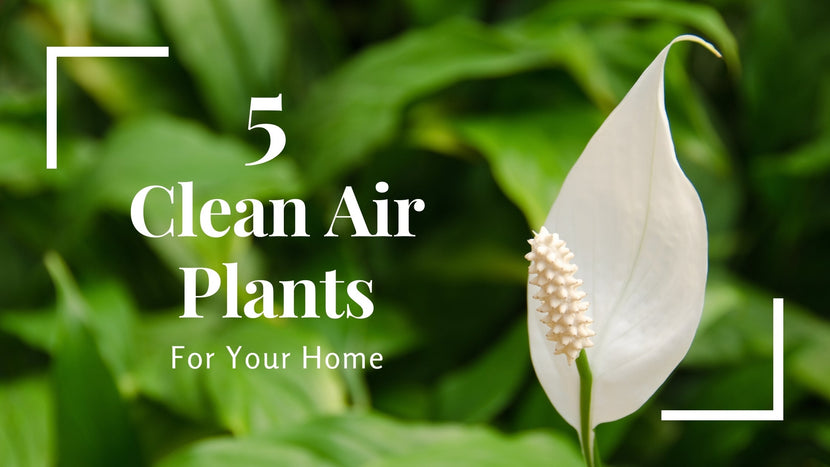
5 Clean Air Plants You Need Now
You may not realize it but every house and office has indoor air pollutants. From chemicals in carpet and paint to chemical cleaners and stagnant air, these indoor pollutants have been ranked among the top five environmental risks to public health. But, there is a piece of good news. NASA has been working on finding solutions to this issue and they’ve found out that some houseplants can actually help clean the air for us. What a simple and affordable way to combat a real problem!
How do houseplants clean the air?
Adding potted houseplants to your home or office has been shown to reduce the number of air particulates. They absorb some of the particulates when they take in carbon dioxide, which is processed into oxygen through photosynthesis. Microorganisms associated with plants are present in the potting soil and these microbes are also responsible for much of the cleaning effect.
As an added bonus, plants just make people feel better! Plus, studies suggest that indoor plants may make people smarter by keeping them alert and reducing mental fatigue.
How many clean air plants do you need?
To be effective, it’s recommended that you’ll need at least two plants per 100 square feet of space, or 15 to 18 good-sized houseplants in a 1,800 square foot house. Even if you have less than that, any clean air houseplants you add will help.
Which clean air plants should you add to your home and office?
We've taken the guesswork out of it for you and have listed our top 5 clean air plants you need now below:

PEACE LILY
Peace Lilies are top on the NASA Clean Air Plant List. A versatile, year ‘round bloomer, the Peace Lily does well anywhere in the home, but it likes direct sunlight and requires weekly watering. This beauty works well in any décor.
Caution: It's important to note that the Peace Lily can be mildly toxic to humans and pets.
What it does:
It rids the air of the VOC benzene, a carcinogen found in paints, furniture wax, and polishes. It also sucks up acetone, which is emitted by electronics, adhesives and certain cleaners.

DRACAENA
The Dracaena is a wonderfully striped houseplant that can handle low light and bright, indirect light. All Dracaena varieties need infrequent watering and look good in any room.
What it does:
The Warnecki cultivar has been tested in NASA’s clean air study and helps remove benzene and trichloroethylene from the air.

FICUS BENJAMINA - WEEPING FIG
The Weeping Fig is a tall houseplant with a canopy of glossy green leaves that makes a statement in any room. It will adjust to any environment but it grows the best in bright, indirect light.
What it does:
Removes formaldehyde, Xylene, and Toluene.

BOSTON FERN
Boston Ferns are a classic houseplant that filters air, handles anything from bright indirect light to a shady spot outdoors. They prefer to be constantly moist and grow quickly with a graceful weeping habit. It features feather-like leaves and curved fronds that are well suited to indoor hanging baskets. It's considered one of the most efficient air purifiers, but it can prove a bit difficult to maintain because of its need for constant moisture and humidity.
What it does:
This fern works especially well in removing formaldehyde, which is found in some glues, as well as pressed wood products, including cabinetry, plywood paneling, and furniture. (Some studies also show it can remove toxic metals, such as mercury and arsenic, from the soil.)

SPIDER PLANT
Spider Plants are a classic, usually green and white variegated, houseplant that performs well in fluorescent light to bright, indirect light. They like to dry out between waterings and flourish in hanging baskets.
What it does:
Put a spider plant on a pedestal or in a hanging basket close to a sunlit window and you'll benefit from fewer airborne formaldehyde and benzene molecules.
